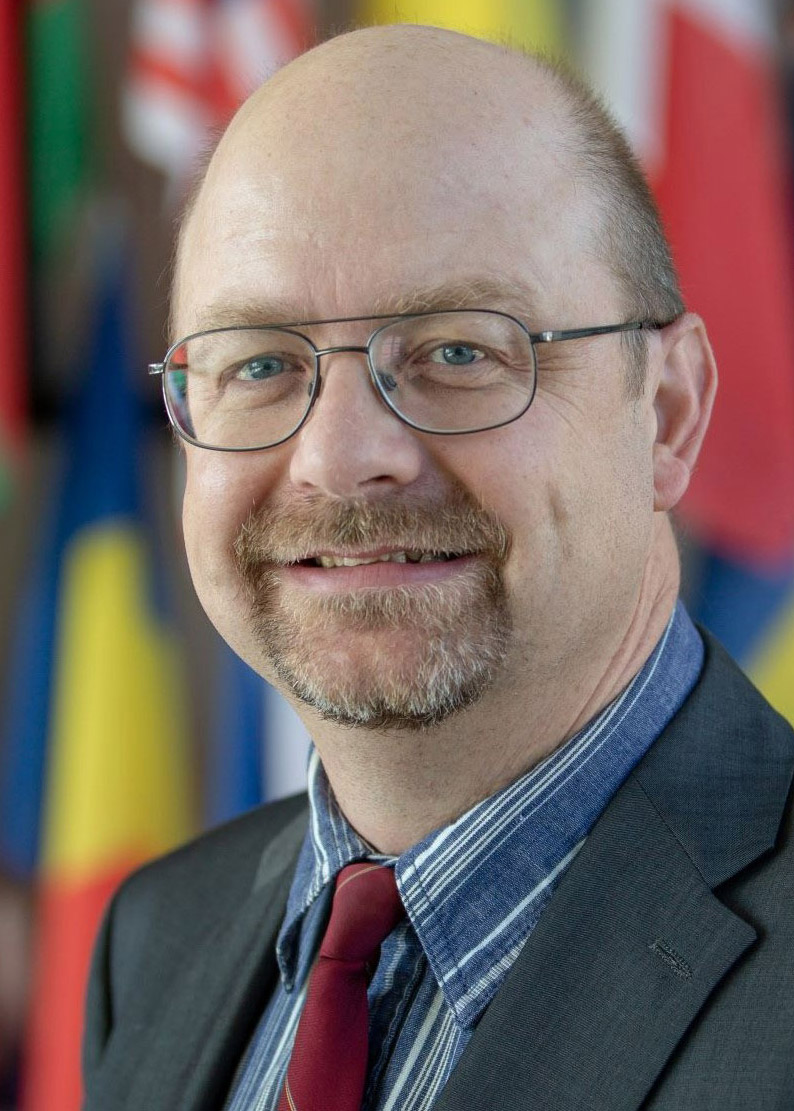Safety and security systems remain unharmed following drone attacks
The American Nuclear Society (ANS) condemns the recent drone attacks at Ukraine’s shutdown Zaporizhzhia Nuclear Power Plant (ZNPP) and supports the International Atomic Energy Agency (IAEA) Board of Governors in its continued call for an immediate removal of Russian military and personnel from ZNPP.
Workers install the core module of Linglong One, the world's first commercial SMR, at a nuclear power plant in Changjiang Li autonomous county, Hainan province, in August 2023. (Photo: Zhang Liyun/chinadaily.com.cn)
China is on pace to add as many as 10 reactors a year and may surpass the United States’ total nuclear capacity by 2030.
As part of this growth, construction is wrapping up this month on the world’s first onshore commercial modular pressurized water reactor—Linglong One, which is located in the Hainan province. That’s according to China Metallurgical News, an established news unit reporting on China’s industrial chain.
Vladimir Putin (left), Rafael Mariano Grossi (right), with Alexey Likhachev (Image: Kremlin.ru)
International Atomic Energy Agency director general Rafael Mariano Grossi visited Russia this week to discuss the “future operational status” of Ukraine’s Zaporizhzhia nuclear power plant with Russian president Vladimir Putin.
An IAEA task force visited Fukushima in October 2023 to review the safety of TEPCO’s discharge of ALPS-treated water. (Photo: TEPCO)
International Atomic Energy Agency experts have confirmed that the tritium concentration in the fourth batch of treated water released from Japan’s Fukushima Daiichi nuclear power plant is far below the country’s operational limit.
An olive harvest. Europe produces 60 percent of the world's olive oil. (Photo: FAO)
The International Atomic Energy Agency is developing multiple methods to rapidly screen and authenticate the origin of foods like extra virgin olive oil. With recent heat waves and droughts affecting olive oil yields in Europe—which produces 60 percent of all olive oils—the European Commission has a problem: a growing black market in fake virgin and extra virgin olive oils. According to a 2022 EC report, olive oil is one of the most mislabeled food products in Europe.
Zaporizhzhia nuclear power plant in Ukraine. (Photo: DOE)
Russian shelling is being blamed for damage to the single remaining power source to Ukraine’s Zaporizhzhia nuclear power plant, located on the front lines of the ongoing military conflict.
“After another attack by the Russians, the line that provided the energy supply to the Zaporizhzhia nuclear station was damaged,” Ukraine's power grid operator Ukrenergo said in a February 21 statement.
The Nine Mile Point nuclear power plant in Oswego, N.Y., site of a DOE hydrogen demonstration project. (Photo: DOE)
As hydrogen production increases worldwide, some see clean hydrogen as a game-changer when it comes to decarbonizing the steel industry.
Steel production is one of the “hard-to-abate” sectors of industry, which are responsible for about 30 percent of global carbon emissions. These industries are tough to decarbonize because the technologies either do not yet exist or are considered uneconomical.
The Bushehr nuclear power station, a 915-MWe facility, came on line in 2013. It is Iran’s only operating nuclear power plant. (Photo: Bushehr NPP)
A ceremonial ground-breaking event took place last week at the site where the Atomic Energy Organization of Iran (AEOI) says four new nuclear reactors will be built over the next 20 years.
The Zaporizhzhia nuclear power plant. (Photo: Energoatom)
Recent staff cuts at Ukraine’s Zaporizhzhia nuclear power plant (ZNPP) are raising concerns among international nuclear watchdogs.
Ahead of his visit to the plant on February 7, International Atomic Energy Agency director general Rafael Mariano Grossi told the Associated Press that he will focus on the impact of personnel reductions, especially while Russia has denied access to employees of Ukraine’s nuclear operator, Energoatom.
[Click image for full view.] More than 20 African countries have no radiotherapy treatment facilities. Darker blue areas indicate regions of greater population density, while radiotherapy centers are marked with red dots. (Image: IAEA)
More people in low- and middle-income countries who have head and neck cancer may be able to access lifesaving radiotherapy after research supported by the International Atomic Energy Agency has shown that fewer—but higher—doses of radiation treatment resulted in clinical outcomes similar to standard radiotherapy treatments. Reducing overall treatment times for this type of cancer through a treatment regimen called hypofractionation could help countries navigate resource constraints and shorten waitlists, enabling more patients to receive treatment while also reducing the cost and duration of care. The IAEA announced the findings in a news article published January 22.
An IAEA researcher collects samples from the Antarctic shoreline. (Image: IAEA)
The International Atomic Energy Agency, in cooperation with Argentina, launched a scientific research expedition on January 6 to study microplastics in Antarctica—one of the planet’s most remote areas—as part of an effort to combat widespread microplastic pollution.
Members of the IAEA’s INSServ team visit the Sihanoukville Autonomous Port in Cambodia. (Photo: IAEA)
The International Atomic Energy Agency completed an advisory service mission to Cambodia on December 11–22 that focused on assessing the country's security regime for nuclear and other radioactive material out of regulatory control (MORC).

















